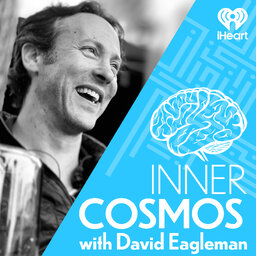Ep24 "What does drug withdrawal have in common with heartbreak?"
Why do you still feel the waves after getting off a boat? Why does the wall seem to come at you faster after you step off the treadmill? Why do the rocks seem to move upward after you stare at a waterfall? Why did people in the 1980s think their book pages had some red color in them… but no one thought that before or after the 80s? And what does any of this have to do with drugs, heartbreak, yellow sunglasses, or Aristotle watching a horse stuck in a river? Join Eagleman to understand how the brain constantly readjusts its circuitry to best read the world, and what it means for our (sometimes strange) perceptions of what's out there.
 Inner Cosmos with David Eagleman
Inner Cosmos with David Eagleman


